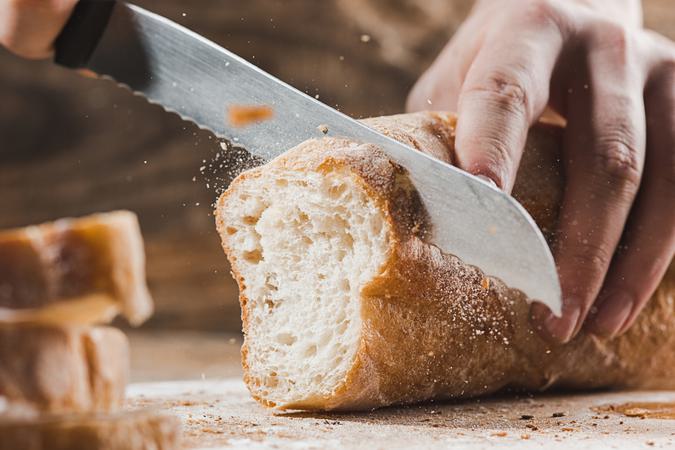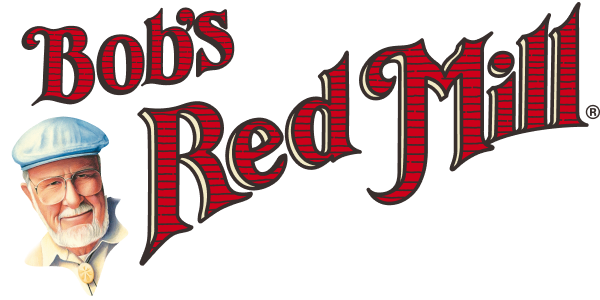If you are a baker or are trying to do more baking, you have undoubtedly run into the term leavening or leavening agent in some form already. The most common use of this term is likely during Passover when the Jews were fleeing Egypt had to leave so quickly that they did not leave time for leavening--to this day, Jews still only eat unleavened bread during Passover. So you may be thinking of unleavened bread as flat, crispy bread, and this is pretty much accurate. Leavening is what makes bread rise or lighten, causing that delicious flaky or chewy texture that we love so much. There are a few things that leaven dough or batter, and the right one depends on your desired result. We'll talk about all types of leavening agents today, so keep reading to find out everything you need to know about leavening your doughs and batters.
Why Leaven Your Dough or Batter?
First of all, we should understand why someone would want to leaven their bread. If you have ever tasted that unleavened bread during Passover season, then you may have an idea of why. Without leavening, your dough or batter will become crispy, flat, and typically a lot tougher to eat. While this will still keep you alive in an Egyptian desert, it may not be the yummiest treat you have ever tasted. However, you can still enjoy some flatbreads, like tortillas or naan bread, so don't give up on anything unleavened completely!
As for leavened breads, you may enjoy that the process is unique. Mixing your dough or batter causes the proteins gliadin and glutenin to combine and form a protein called gluten (you may have heard of this one!). The gluten builds an elastic chain, which allows the dough to expand and contract--think of how you can stretch dough so easily. Then the leavening agent builds a matrix of gases inside your dough or batter, which traps air inside and causes the dough or batter to expand upon baking. After baking, the gas is able to escape the dough, but leaves the structure of all the little air pockets still in place. This gives your end product the lightness and fluffiness that we expect from a delicious homemade baked good, and can vary greatly by the size of the gas bubbles that are formed during leavening. There are several ways to leaven your batter or dough, so we will cover a few of the most popular ones here, to have you leavening like a pro in no time.
Biological Leavening Agents
The main biological leavening agent is yeast. Yeast are tiny single-celled organisms that play an important role in our lives: without yeast, we would not have beer, wine, or bread (which would be terrible, we agree). The yeast is completely responsible for the process we know as fermentation, which is vital to leavening. During fermentation, yeast eats the sugars that are found in your dough or batter and produce the alcohol that is used in brewing and wine-making, as well as producing CO2 gases that are useful for our breadmaking purposes. Those CO2 gases are the tiny gas bubbles that form into the dough and create the structure we mentioned earlier. Yeast are living organisms until they are killed during the baking process, so you sometimes need to activate or proof them to make sure they are ready to binge on all the delicious sugars in your batter!
Yeast comes in a few varieties, but most recipes will call for active dry yeast. As we wrote earlier, you should proof this yeast before use to make sure the yeast are still alive and well. It is best to use the type of yeast called for in a recipe, and note that yeast can add flavor to your end product, so using too much of it could make your bread taste too yeast-y (that is a technical term!). You may have heard of kneading, which is the process by which you bring the yeast into your dough and ensure it is working hard to release CO2. Overall, yeast and yeast products like beer or kefir are great leavening agents, especially for things like sourdough bread!
Chemical Leavening Agents
Chemical leavening agents were created at the turn of the 19th century and popularized due to (theoretically) being more easily controlled than yeast. Yeast is still its own successful leavening agent, but now chemical leavening agents have become popular in other types of recipes, notably cookies, quick breads, and cakes. The idea is that chemical leavening agents are typically bases, and react with acid to release the gases that we need to make batter or dough rise. The most common chemical leavening agent is baking soda, you probably have some in your fridge right now! Baking soda has to be mixed with an appropriate acid to create the chemical reaction needed to make your batter rise, though, so make sure you include some buttermilk, citrus, or lemon juice (to name a few) to ensure you have the best texture possible.
Baking powder is another chemical leavening agent and is mostly just a pre-made mixture of baking soda with an acid and starches or fillers. These are thought to be easier than creating your own chemical reactions, so you can buy several varieties that have been created for specific recipes. The important thing is just to keep track of the acid and base quantities in your recipe so that you don't overdo it on one side.
Air or Steam
Air and steam are pretty normal compared to chemical reactions and live yeast eating up your dough, but they can be just as effective in leavening certain recipes. Steam is basically what happens when water hits 212F and vaporizes, which actually expands its volume a whopping 1,500 or so times. This incredible reaction can have dramatic results when harnessed correctly. The trick is making a batter that can handle the speed and intensity of that reaction, as well as the quick, high heat needed to create the reaction in the first place. Some pastries, like puff pastry or choux pastry (used to make profiteroles), are perfect for this reaction. You simply get the dough really hot really quickly, which causes the water in the dough to vaporize and release. The dough is specially prepared to retain the steam as much as possible, which causes your recipe to puff up quickly. This method actually produces some of the lightest, airiest pastries you will ever eat!
Mechanical Leavening
Did you know you could be a leavening agent as well? Mechanical leavening is just a pure brute force. Okay, not so much force, but mostly some impressive arm power. Mechanical leavening uses rapid mixing to force air bubbles into a dough or batter to create a leavening effect. The two main types of mechanical leavening are creaming and whisking. You probably have whisked an egg or two in your life; if you whisk quickly enough and for a good length of time, you may have seen the eggs start to form into a foamy substance. This is leavening in action! Creaming is another way to leaven your ingredients. It involves beating sugar and a fat (typically butter) to mix air bubbles into the substance. Think homemade whipping cream. Most creams (not whipped cream) are then further leavened with some baking soda, for a combination chemical and mechanical reaction!
Gluten Free Leavening
A lot of what we have discussed today involves the flours that we use in a lot of baking, as yeast leavening specifically requires gluten to work. So if you are gluten free, how are you supposed to leaven your breads and other baked goods? You can use gluten free flours, but the leavening will be less effective without gluten, so we recommend including thickening agents like cornstarch and baking breads or rolls in containers with walls to help give them more structure and shape. You can also add guar gum or xanthan gum to help with the chewiness of thicker breads. Chemical leavening is mostly gluten free, but pay attention to the ingredients in any of your baking powders, to ensure that the starches used are gluten free, as some are not. Eggs and mechanical leavening are perfect agents if you are eating gluten free, as these rely more on your strength than any specific flour proteins!
No matter which method is your favorite, you will probably use all of them throughout your time as a baker. Each leavening agent is more suited for specific recipe types, and we do not recommend mixing and matching them in recipes. Baking is all about science and specific reactions, unlike cooking, which is a little more free-form, so any substitutions could cost you in ways that you may not predict right away. However, we absolutely recommend baking enough yummy treats to try all of these leavening agents! Now just make sure you send us some to taste test . . .


